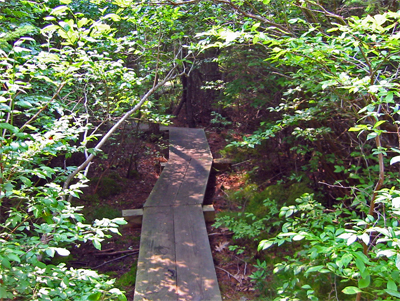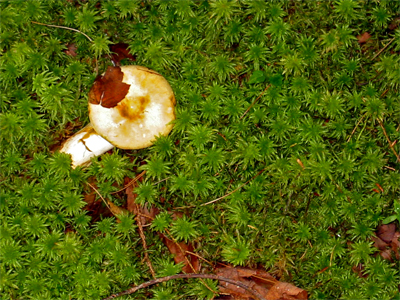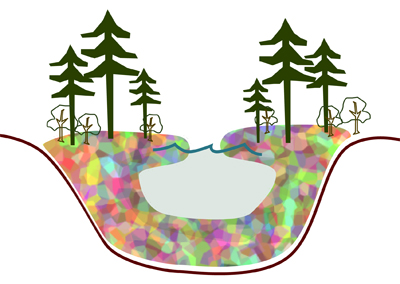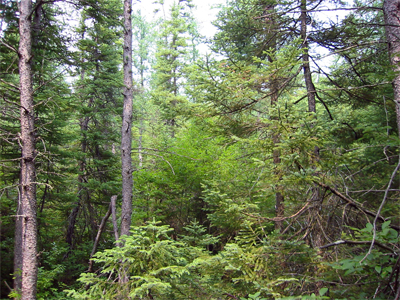Eco: Back to the bog
The last time the boys and I were here at the Black Spruce Bog in the Mohawk State Forest it was a crisp, 20-degree winter day. The air was still except for the large snowflakes that were lightly falling. A thin sheet of clear ice covered the sphagnum moss and ferns on the forest floor like glass over a museum exhibit.
On our return in mid-August six months later, it wasn't our breath we could see, but the humid air of a 90-plus-degree day under a Bermuda high. Barely a half hour after our visit the sky burst and crackled with thunderstorms and lightning, but during the time we were there the sun shined through the tall spruces and tamaracks and sparkled on the shrubs and plank walkway below.

The Black Spruce Bog here is among the most rare of Connecticut’s critical habitats. This particular bog forest is the only one of its type found in the state. It got its start as glacial melt water ponded up in a bedrock depression some ten thousand years ago. This was a place where plants and aquatic life began to re-colonize the tundra as the last Ice Age slowly melted away.
Ecologist Dr. Robert Craig described the bog’s ecology in his book, Great Day Trips to Connecticut’s Critical Habitats. “In bogs, living components are involved in creating their own environment," Craig wrote. “Once a vegetation mat is established, decaying plant material accumulates on it, and plant debris rain into the pond below. Devoid of oxygen, the materials build into a thick layer of a semi-preserved substance known as peat.” (Today, over 40 feet of peat fill the former pond here.)

“On the surface of the bog,” Craig explains, “which is low in nutrients, a process of colonization events occur involving increasingly complex plants. In the beginning, it is plants like the sedges and thick, spongy mats of Sphagnum. A host of other herbaceous plants colonize as well, with grasses like Cotton Grass particularly conspicuous. As bogs age, their mat thickens, producing a substrate suitable for woody plants, like Creeping Snowberry.

"They extend out across the pond at middle age, and toward the edge trees become established. The blue-black spires of Black Spruce contrast with the open, lime-green crowns of Tamarack. In old age, the bog fills with peat, and the quaking surface of the young bog is gradually made more stable."

A truly magnificent and magical place, the bog is easily accessed via a very short hike, and a plank walkway out the to center of the bog. It's a journey many grandparents can make comfortably, and an adventure kids love.
5 Comments:
Great spot, good post. As many times as we've visited, we've never seen another soul! You have it all to yourself. Mohawk State Forest is great year round.
Mohawk SF also has observation tower not far from bog.
I own a bog in ct along with my brother and sister. It has been in our family for a very long time but is now nearly land locked by houses that surround it and has been ignored for a very long time. Any suggestions on what we could do with it. Are there entities out there that would be interested in preserving it and protecting it if we gave it to them?
I believe the observation tower is gone only satellite tower left, sad, it feels different up there but view is still spectacular
Observation tower was gone lst time I went to there,was sad, felt different, the view however is still spectacular
Post a Comment
<< Home